

The Growing Impact of Personal Items on SDGs Awareness and Action
The Growing Impact of Personal Items on SDGs Awareness and Action
In a recent survey conducted by Ulu Consultants, a significant number of individuals expressed a desire to contribute to the United Nations' Sustainable Development Goals (SDGs). Around 80% of participants stated they want to take action towards achieving these important global objectives. The study coincides with the launch of the ‘TSUGITE’ project for the Osaka-Kansai Expo 2025, a platform showcasing innovative ideas aimed at creating a sustainable future.
The theme of the 2025 Osaka-Kansai Expo is ‘Designing a Future Society Where Life Shines’. This event is poised to become a melting pot where diverse global contributions can converge to promote sustainable societal initiatives. Amidst these discussions, the action that centers on individuals making small, manageable choices in their daily lives has gained considerable traction. One prominent example of such actions pertains to the use of personal items like reusable bags, bottles, and chopsticks. These simple steps contribute to reducing single-use items and alleviating the environmental burden, making it easy for everyone to participate in addressing global issues such as climate change and resource depletion.
In this context, Ulu Consultants, known for its craft promotion website, ‘Watashi no Meihincho’, initiated a survey on the relationship between personal items and the SDGs. Conducted via PRIZMA, the survey engaged 1,006 respondents who regularly use personal items. The findings are illuminating and provide insight into public attitudes toward sustainability.
Survey Findings
Awareness of SDGs
The survey began by gauging awareness of the SDGs among participants. Results indicate a growing recognition, with nearly 80% of respondents claiming to have varying levels of knowledge about the SDGs, broken down into 16.3% who are very aware and 58.9% who have some knowledge. However, there remains a portion of the population that is not familiar with these goals, which pose a challenge to mobilizing action.
Desire to Contribute
When asked about their willingness to contribute to the SDGs, an overwhelming 83.6% affirmed their commitment, with 22.7% strongly agreeing and 60.9% somewhat agreeing. This demonstrates a favorable disposition towards taking steps that align with sustainable practices. However, the survey sought to understand what kind of support would facilitate their engagement with the SDGs.
Support Needed
Respondents highlighted several preferred forms of support that would ease their transition into sustainable behaviors. A resounding 74.1% indicated a need for clear and easily understandable information on simple actions they could take. Others expressed interest in incentives, such as discounts on sustainable products and services (41.9%) and tax benefits associated with such purchases (26.5%). These insights hint at a demand for clearer pathways and beneficial incentives that encourage involvement in sustainability initiatives.
Actionable Steps
Moreover, when prompted about actions they believed they could undertake to contribute to the SDGs, the most cited responses included energy conservation (78.0%), water conservation (74.8%), and using energy-efficient appliances (54.6%). These findings reflect a willingness to adopt practical strategies that can lead to meaningful contributions on a daily basis.
Popularity of Personal Items
The survey also asked about the personal items respondents commonly used. An impressive 83.5% cited their reusable bags, which topped the list. This was followed by reusable cups, bottles, and tumblers (48.5%) and reusable chopsticks (22.3%). This data underscores a prevalent trend among individuals to incorporate personal items into their daily routines, showcasing a functional approach to sustainability.
Motivations for Usage
Participants were queried about their motivations for using these personal items, revealing financial incentives such as saving money (61.6%) and the reduction of single-use products (44.7%) as primary drivers. A notable percentage also mentioned the development of a routine around these practices (31.2%). These motivators highlight that the inclination to engage with sustainability often intertwines with tangible benefits and lifestyle choices.
Emotional Satisfaction
Another fascinating aspect of the survey focused on the psychological effects of using personal items. When asked how personal items made them feel, 54.9% reported a sense of joy in making practical and economically wise choices, and 24.4% felt a sense of pride in contributing to environmental preservation. Furthermore, 80% of respondents noted that utilizing personal items results in feelings of fulfillment, indicating that these simple practices contribute positively to their well-being.
Conclusion
Overall, the survey results signal a strong interest in SDGs while revealing potential gaps in knowledge and barriers to action among certain demographics. The desire for clearer guidance and incentives indicates that practical assistance could significantly enhance involvement in sustainable practices. The use of personal items emerges not just as a convenient choice but as a bridge connecting economic and environmental concerns with emotional fulfillment. This alignment suggests that adopting straightforward and meaningful actions in daily life can play a critical role in advancing towards a sustainable society. Understanding and capitalizing on this potential may be key for initiatives like the TSUGITE project, which strives to provide rewarding and educational experiences while fostering a culture of sustainability in Japan and beyond.
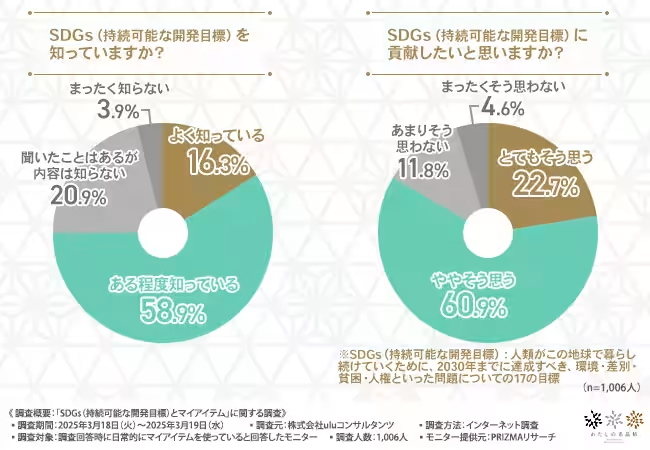
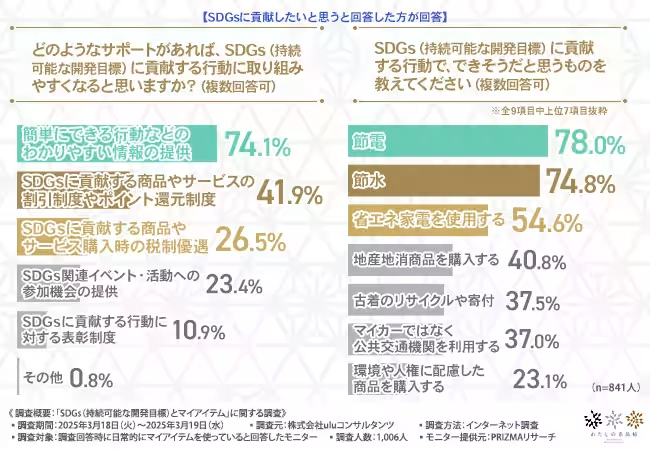
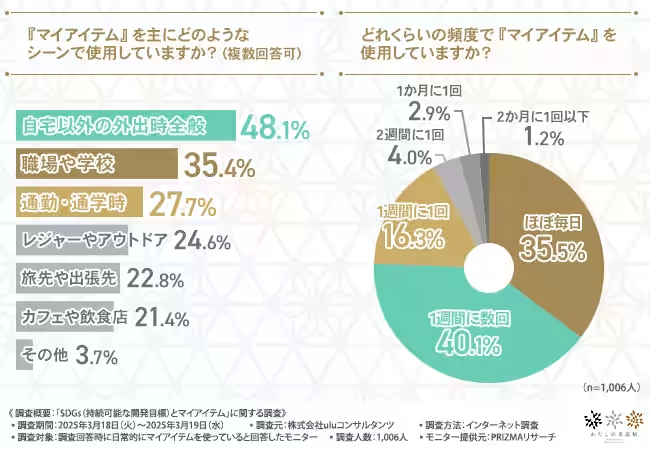
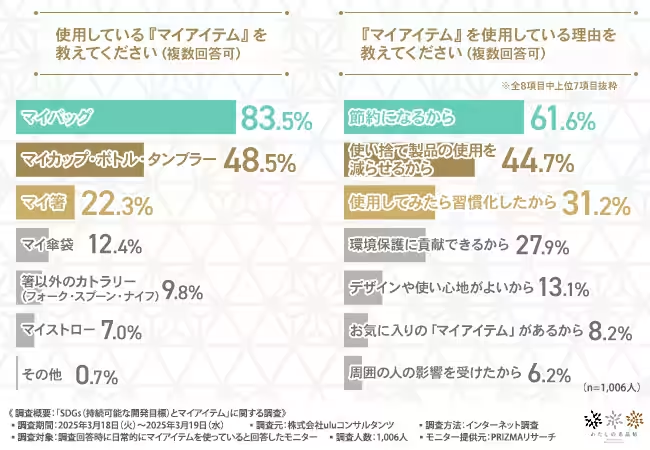
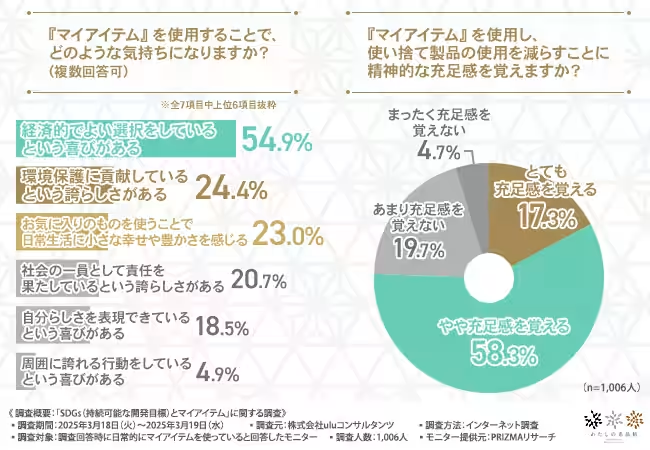

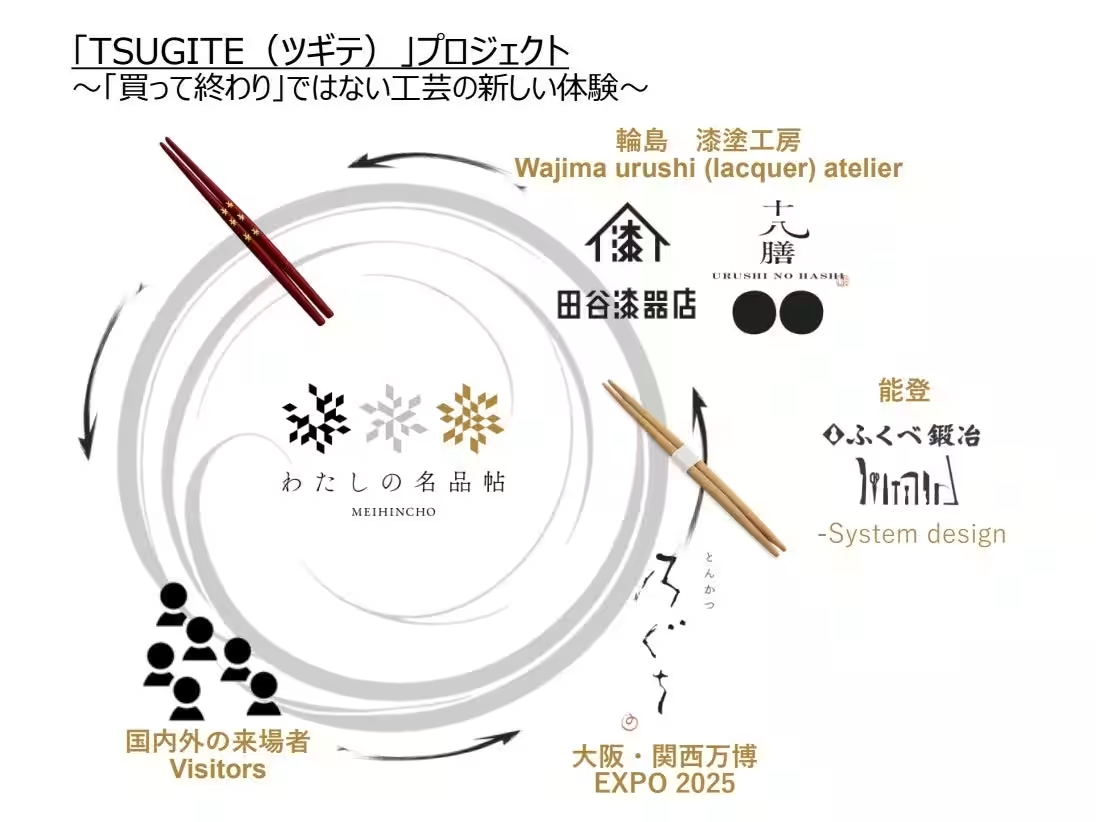






Topics Other)










【About Using Articles】
You can freely use the title and article content by linking to the page where the article is posted.
※ Images cannot be used.
【About Links】
Links are free to use.